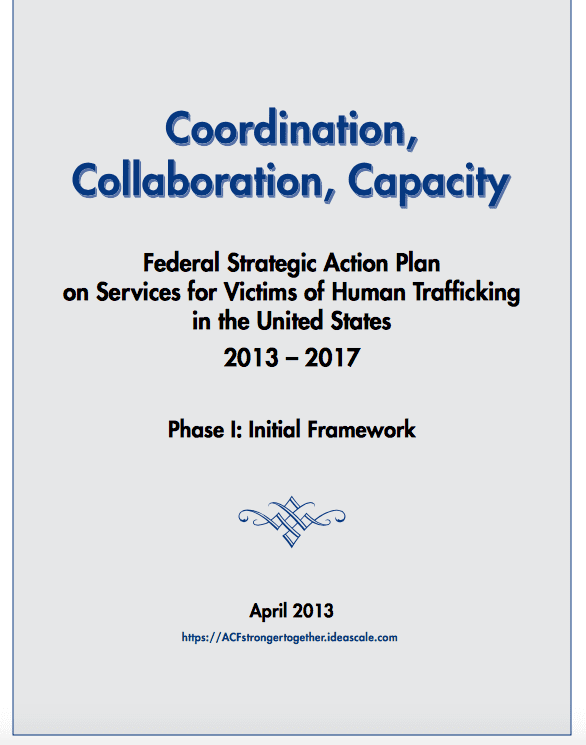
Coordination, Collaboration, Capacity: Federal Strategic Action Plan on Services for Victims of Human Trafficking in the U.S.
The Plan was informed by the Federal Government’s ongoing engagement with nongovernment stakeholders, including a listening session held at the White House on December 10, 2012, and hosted by the Department of Health and Human Services (HHS). While this Plan focuses on providing and coordinating support for victims, it aligns with all other efforts of the Federal Government to eliminate human trafficking and prevent further victimization, particularly the Federal Government activities outlined in the Attorney General’s Annual Report to Congress and Assessment of U.S. Government Activities to Combat Trafficking in Persons. Federal agencies have a range of anti-human trafficking responsibilities that complement the victim services addressed in this Plan, and include criminal enforcement, labor enforcement, public awareness, education, international development and programs, immigration, intelligence, and diplomacy. The Plan identifies several “core values” (listed in the Plan Development section on pages 13–16) related to trafficking victim services and key areas for improving service delivery. Recognizing that government alone, cannot stop this insidious crime, the Plan is written to appeal to a wide set of actors in order to bring additional resources, expertise, and partnerships to end human trafficking and better support victims. For example, public awareness must be increased to engage more stakeholders and increase victim identification. There must also be an expansion of access to victim services. Finally, the quality of the services, not merely the quantity, must be addressed to ensure that victims are supported throughout their long-term journey as a survivor. The Plan lays out 4 goals, 10 objectives, and contains more than 130 associated action items for victim service improvements that can be achieved over the next 5 years. Actions to address victim identification are woven through each of the goals
